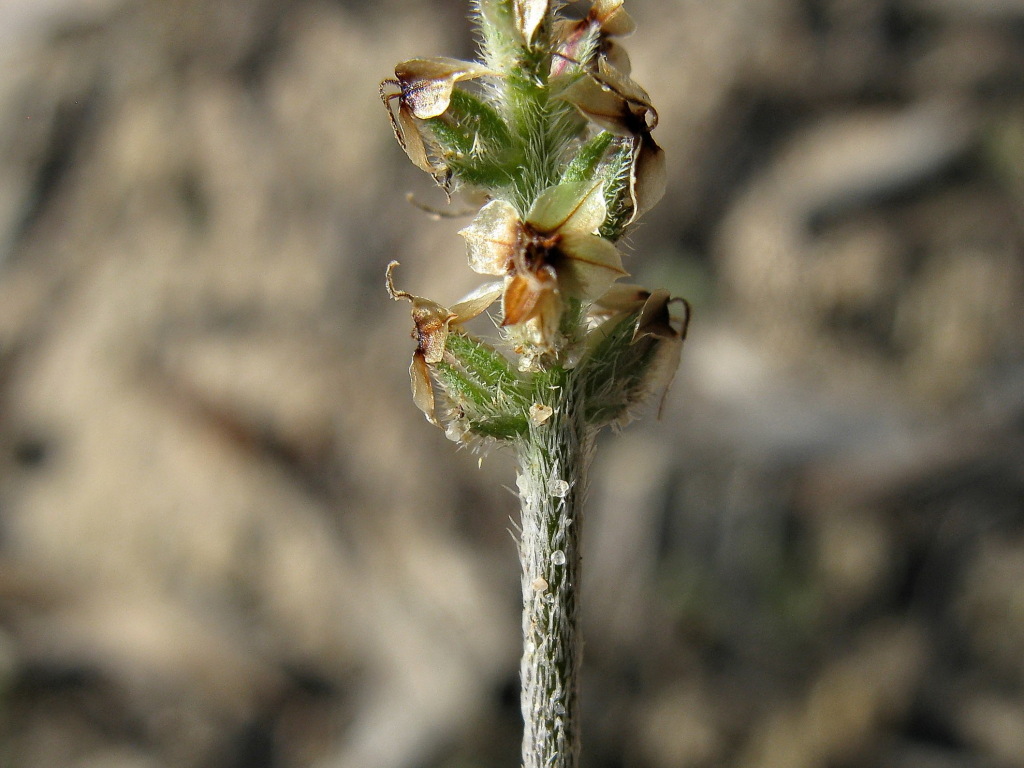Plantago hispida
R.Br. Hairy PlantainTaprooted perennial. Leaves rosetted, narrow-oblong to oblanceolate, mostly 4–9 cm long and 3–15 mm wide, usually obtuse, usually pubescent, 1–5-veined, margins toothed (sometimes obscurely); petiole to c. 3 cm long. Spike cylindric, mostly 1–6 cm long, congested; peduncles 3–30 cm long, pubescent; bracts ovate, 1–3 mm long, acute or obtuse, keel pubescent, margins ciliate. Sepals oblong-elliptic, usually 2.2–3 mm long, subequal; corolla-tube 1.5–2.5 mm long, lobes 1.3–2 mm long, spreading or reflexed; anthers 1–2.2 mm long, exserted. Capsule ovoid to ellipsoid, 2.8–3.5 mm long, style-base persistent; seeds 1–5, compressed-ellipsoid, 1–1.5 mm long, brown. Flowers Sep.–Mar.
LoM, MuM, Wim, GleP, VVP, VRiv, MuF, GipP, OtP, WaP, Gold, CVU, GGr, DunT, NIS, EGL, EGU, WPro, HSF, HNF, OtR, MonT, VAlp. Also A, SA, Qld, NSW, ACT, Tas. Apart from the mallee and higher mountains, fairly widespread in Victoria where often found in shallow mossy soil on rock outcrops.
Jeanes, J.A. (1999). Plantaginaceae. In: Walsh, N.G.; Entwisle, T.J., Flora of Victoria Vol. 4, Cornaceae to Asteraceae, pp. 463–474. Inkata Press, Melbourne.
 Spinning
Spinning



